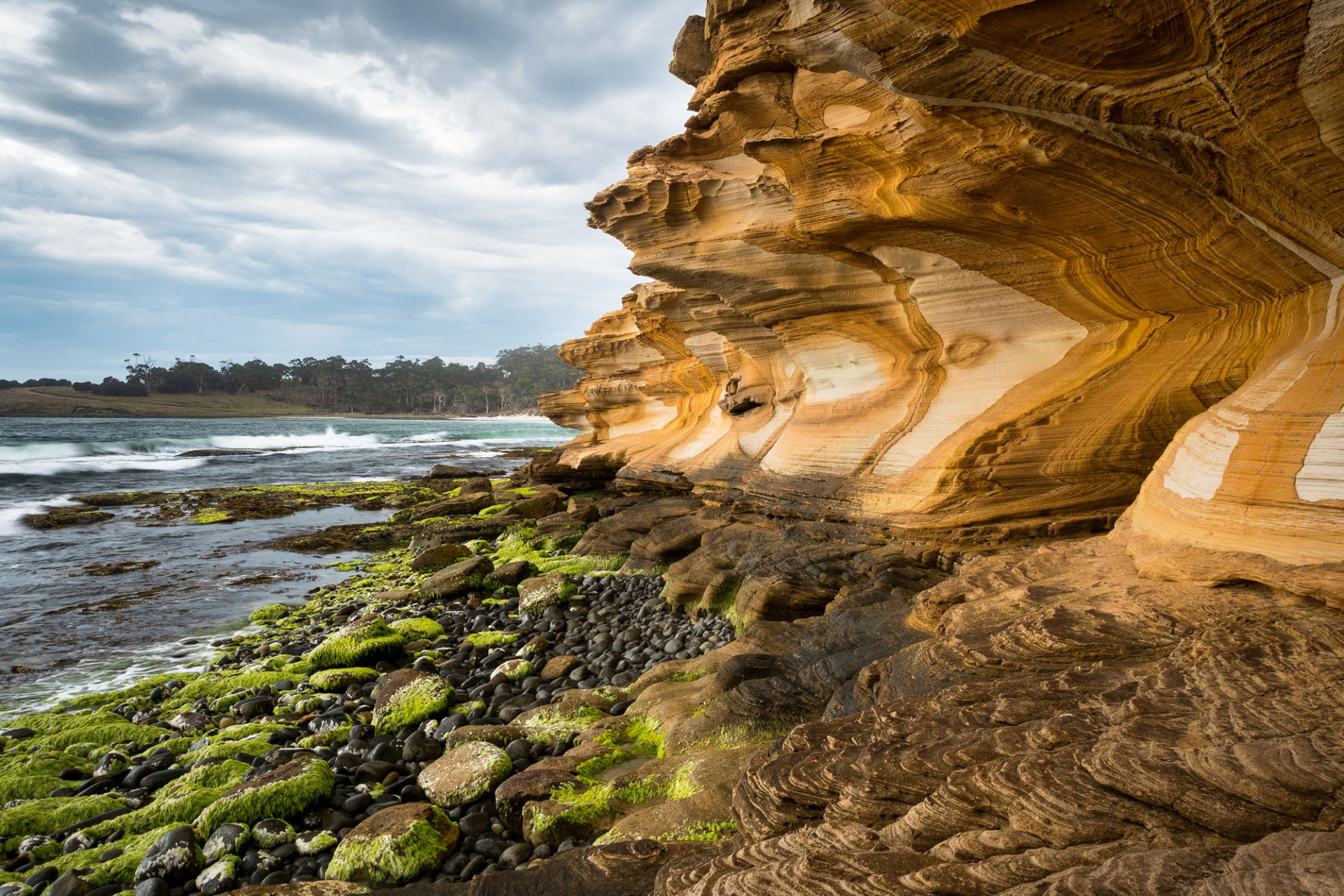
Maria Island, located off the east coast of Tasmania, Australia, experiences several seasonal departures throughout the year. These departures are shaped by the changing weather patterns and are characterized by an influx of tourists and visitors during peak seasons, as well as a decrease in activity during the off-season.
Spring (September - November)
This is a popular time for nature enthusiasts and bird watchers, as the island is home to a diverse array of wildlife, including wallabies, echidnas, and several species of birds. The weather begins to warm up and the flora and fauna start to come alive, making it an ideal time for:
Summer (December - February)
This is the peak season on Maria Island, with the island experiencing its warmest weather and the most tourists. It's the perfect time for beach-goers and water-sport enthusiasts, as the island is surrounded by pristine beaches and clear, turquoise waters. Some of the top attractions and activities during the summer months include:
Autumn (March - May)
This is a peaceful time on the island, as the tourist crowds have thinned and the scenery transforms into a beautiful tapestry of fall colors. Some of the top autumn activities include:
Winter (June - August)
This is the off-season on Maria Island, with fewer visitors and a more muted atmosphere. The weather is cooler and wetter, and it's worth noting that some tours and activities may not operate during this time, particularly between June and September. Some of the top winter activities include:
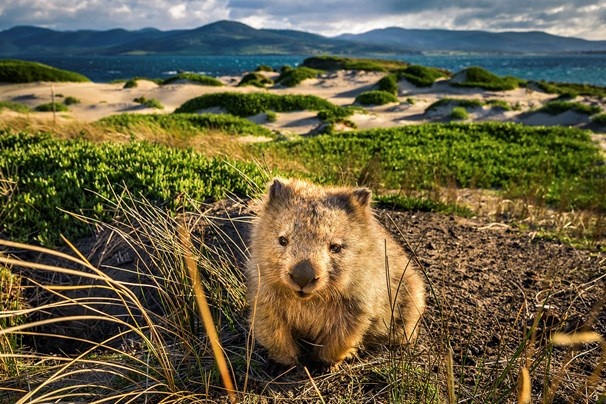
Maria Island is a wildlife enthusiast's paradise and is home to an abundance of fascinating and unique land mammals and birds.
Summer Wildlife Guide:
Land Mammals:
Birds:
Autumn Wildlife Guide:
Land Mammals:
Birds:
Where to Look:
Winter Wildlife Guide:
Land Mammals:
Birds:
Where to Look:
Spring Wildlife Guide:
Land Mammals:
Birds:
Where to Look:
Don't forget to bring your binoculars and cameras!
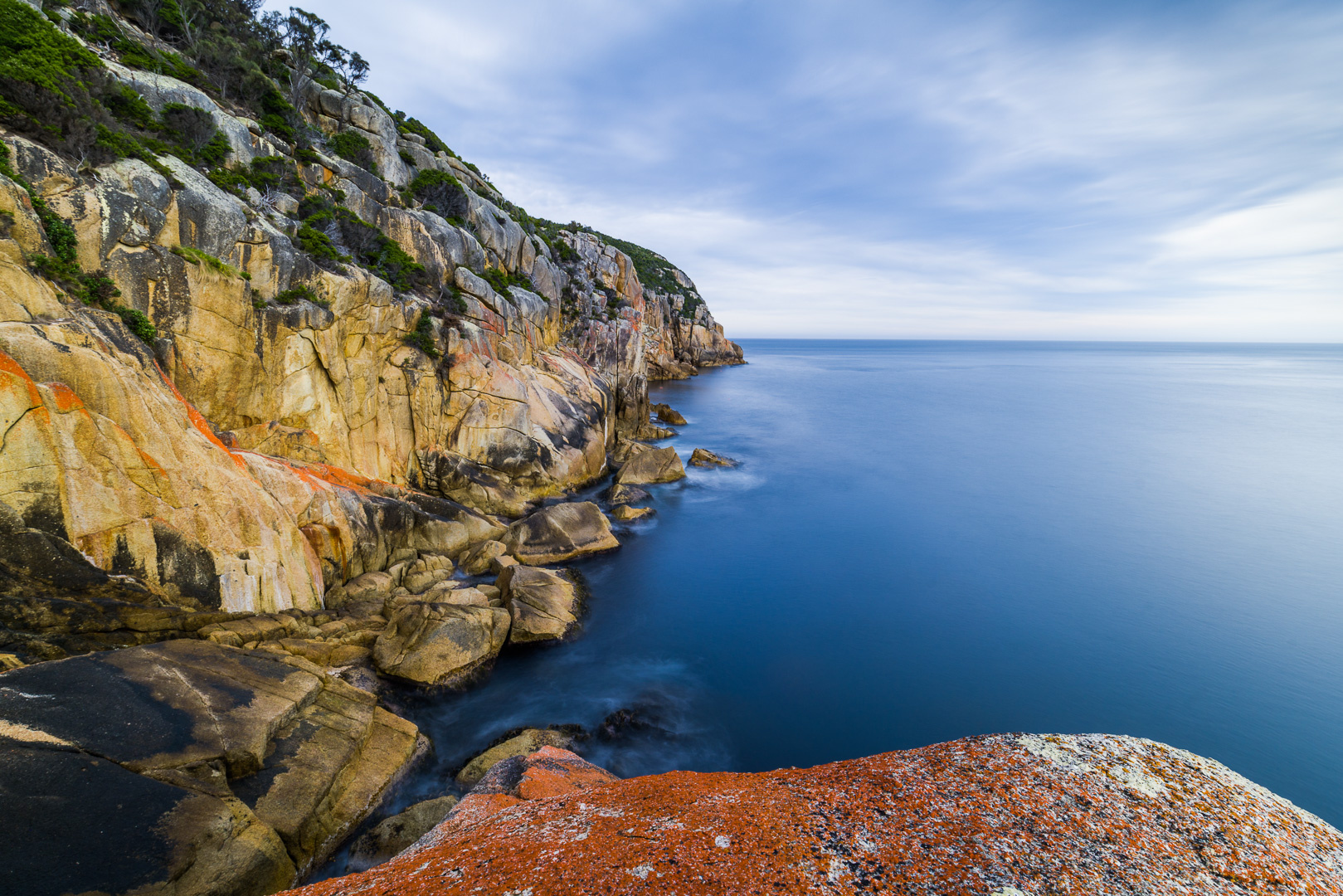
The marine reserve extends along the north and west coasts of the island, from low water mark to 20 m water depth, with a no-take zone between Cape Boullanger and Return Point where fishing and other extractive activities are prohibited.
Snorkelling and Diving:
Rockpool Rambling:
Fishing:
Going Ashore:
Helpful Tips:
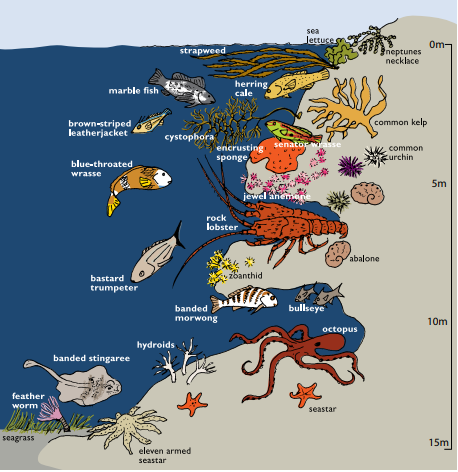
Maria Island Marine Reserve protects a variety of marine habitats found along Tasmania's east coast, including seagrass beds, sand and coral reefs composed of different rock types like dolerite, siltstone, sandstone and limestone. The reserve also covers areas with varying levels of wave exposure, ranging from sheltered to fully exposed. One of the highlights of the reserve is Fossil Bay on the exposed north coast, which features deep gutters, overhangs and caves (extending up to 40 meters into the limestone cliffs) that create breathtaking seascapes both above and below the water.
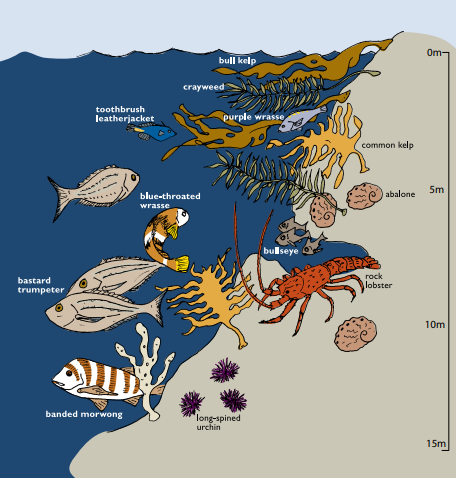
The west coast of the reserve offers sheltered waters that provide a thriving habitat for a variety of marine life, including large southern rock lobsters. Since the reserve was established in 1991, the populations of reef fish like bastard trumpeter, banded morwong, and boarfish have noticeably increased. The area is also well-known for sightings of seahorses and weedy seadragons, as well as more elusive species like the warty prowfish and red velvetfish that can be found hiding among sponges and algae.
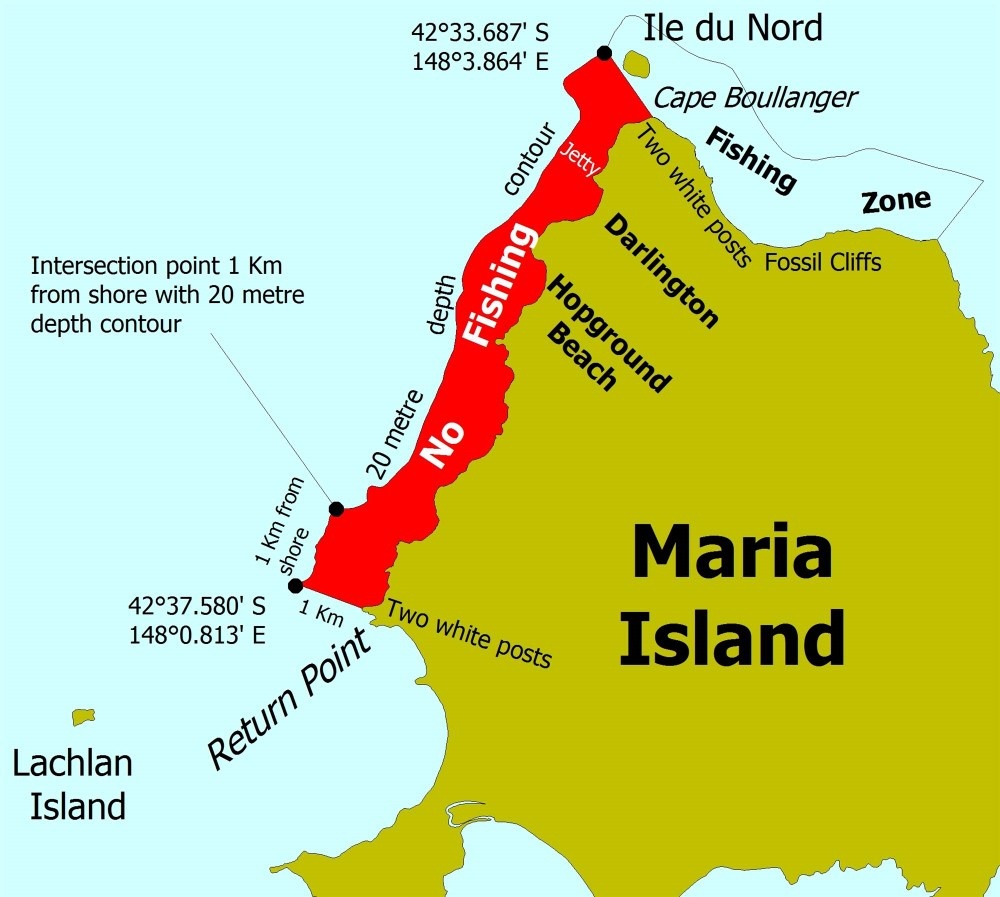
The types of marine life you can expect to see will depend on the season and the location around the island. Here's a general overview of what you might see in each season:
Spring (September - November):
During this time, the waters around Maria Island are teeming with life. You may see Humpback Whales on their migration to the warmer waters of the north. Schools of Kingfish, Trevally, and Salmon can be found along the rocky headlands, while seals and sea lions bask on the rocks and haul-out sites. In the sheltered bays, you can spot cuttlefish, octopus, and squid.
Summer (December - February):
Summer is the best time for snorkeling and diving, with warmer water temperatures and clear visibility. You can see colorful schools of fish such as Blue-Spotted Stingrays, Wobbegongs, and Port Jackson Sharks. Schools of Tuna, Mackerel, and Bonito can be found in the open waters, while seals and sea lions swim, play and mate.
Autumn (March - May):
Autumn is the best time for watching birds. During this time, thousands of birds, including shearwaters, terns, and gulls, flock to Maria Island in preparation for their migration to warmer climates. Schools of baitfish also start to aggregate along the island's coastline, attracting predatory species such as Southern Bluefin Tuna, and Marlin.
Winter (June - August):
Winter is the best time for whale watching. The Southern Right Whales can be seen in the sheltered bays and bights around Maria Island. You may also see the occasional Minke Whale, Humpback Whale, or Orca. Schools of Fish such as Sand Whiting, Gummy Sharks, and Silver Trevally can be found along the shoreline.
It's important to note that wildlife populations can be unpredictable and can vary from year to year based on a variety of factors such as weather patterns and ocean currents. Marine life sightings can also depend on the specific location and time of day. It's always a good idea to check with local authorities or tour operators for up-to-date information on what species are currently being seen in the area.
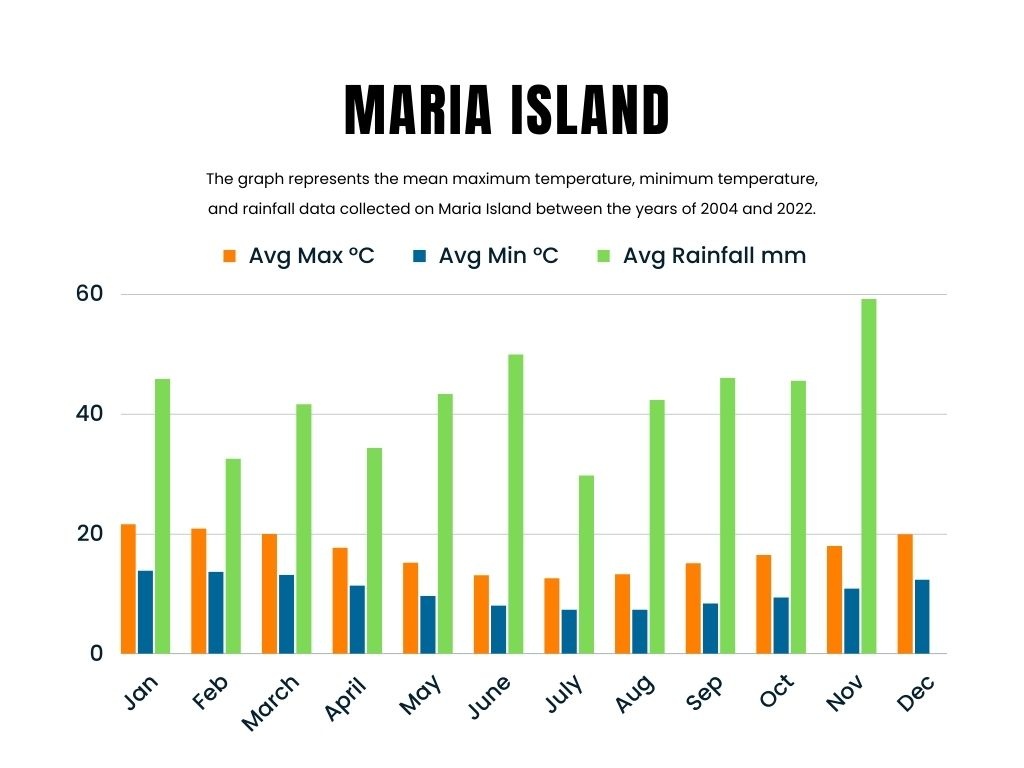
Maria Island is known for its diverse landscapes and weather conditions, which can change drastically from one season to the next. As such, it's important for visitors to be prepared for a range of conditions, including sun, rain, and wind, when exploring the island. This guide will provide you with an overview of what to expect weather-wise for each season, as well as tips on what to wear to stay comfortable and protected.
Spring (September - November)
During spring, temperatures on Maria Island are moderate and range from 10°C to 20°C. This season can be quite variable, with sunny days interspersed with rainy spells. Be sure to pack a waterproof jacket, as well as light layers that can be easily removed as temperatures warm up.
Summer (December - February)
Summer is the warmest time of year on Maria Island, with temperatures averaging between 20°C and 25°C. While it can be hot during the day, the weather can cool down in the evenings, so it's a good idea to bring along a light sweater or jacket. Pack plenty of sunscreen and a hat, as well as comfortable, breathable clothing, as you will likely spend a lot of time outdoors exploring the island.
Autumn (March - May)
Autumn on Maria Island is marked by cooler temperatures and changing leaves. Temperatures average between 10°C and 15°C, and it can be quite windy at times. Pack a waterproof jacket, warm layers, and a hat to protect yourself from the elements.
Winter (June - August)
Winter on Maria Island is cold, with temperatures ranging from 5°C to 10°C. Snow and frost can occur on the island, particularly at higher elevations, so be sure to pack warm layers, a hat, and gloves. A waterproof jacket and sturdy footwear are also essential, as the trails can be slippery when wet.
Remember, it's always a good idea to check the weather forecast before heading out on your trip, and to pack extra clothing and gear as necessary. Whether you're exploring the stunning landscapes, wildlife-watching, or simply enjoying the peace and quiet of the island, being prepared for the weather will help ensure a safe and comfortable experience.